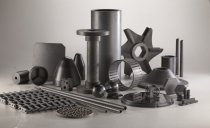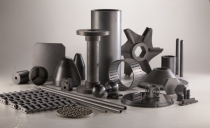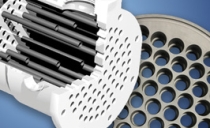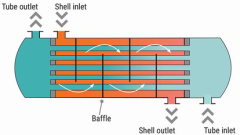
Heat Exchangers: Your Questions Answered
FAQ
When you receive frequent questions about your products and their applications, as we do at Saint-Gobain Performance Ceramics & Refractories, patterns emerge. That is, some are more prevalent than others, and questions about Hexoloy® silicon carbide (SiC) and its use for fabricating shell-and-tube heat exchangers are among the most common.
We have answered four of these questions below.
What is a shell-and-tube heat exchanger?
The shell-and-tube heat exchanger is the type used in almost all industrial applications. SiC-based heat exchangers are commonly used by the chemical industry, for example, in the processing of sulfuric acid. This type of heat exchanger is popular because of its simplicity (as it has no moving parts), its inherent strength (as it is cylindrical), its ability to handle pressures greater than 30 bar and temperatures higher than 260ºC, as well as easy servicing, especially when tube bundles are removable for maintenance.
Another common type of heat exchanger is the plate type, which has its advantages and disadvantages for specific applications. There are many variations of both types.
How does heat transfer work in a shell-and-tube heat exchanger?
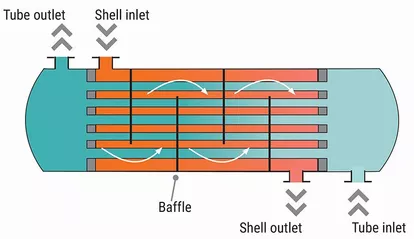
Figure 1. Illustration shows the main components of a shell-and-tube heat exchanger.
One fluid flows throughout the shell and thus over the tubes, and the other through the tubes. Baffles in the shell create turbulence to direct fluid across the tube bundle and prevent the tubes from sagging or vibrating.
What are the problems associated with corrosion? How are they mitigated?
Corrosion is the result of complex chemical reactions between the heat exchanger tubes and the fluids that circulate through them. The types and severity of corrosion vary with fluid types and the materials from which the tubes are made. The best way to mitigate corrosion is by using a material that is inherently resistant to it.
In contrast to the many other materials used as heat exchanger tubes (for example, Graphite, Hastelloy, Tantalum), Hexoloy® SiC is universally resistant to corrosion and erosion, which makes it inherently more reliable with a longer operating life. In addition, it is extremely hard and lightweight, can handle extremely high temperatures and thermal shock and its thermal conductivity is exceeded only by carbon.
Should tubes in shell-and-tube heat exchangers be pressure tested?
All heat-exchanger tubes must be pressure-tested at the time of manufacture, even those destined for applications in which pressure is not unusually high.
Among the other tests Saint-Gobain performs on its heat-exchanger tubes, each one is subjected to rigorous pressure testing at levels higher than they will experience in service. This is not just a quality-control measure but also an assurance of safety, as all applications, especially high-pressure environments, can be potentially hazardous.
Related Content
Specialty Ceramics
Saint-Gobain Performance Ceramics & Refractories’ extensive range of specialty ceramic products – ideal for use in the harsh environments typical in broad...
Hexoloy Silicon Carbide Material
Discover Saint-Gobain Performance Ceramics & Refractories’ Hexoloy® SiC - a pressure-less, sintered form of alpha silicon carbide.
Hexoloy SE Sintered Silicon Carbide Tubes and SA Tube Sheets
Discover Saint-Gobain Performance Ceramics & Refractories’ range of silicon carbide products for shell and tube heat exchangers.
